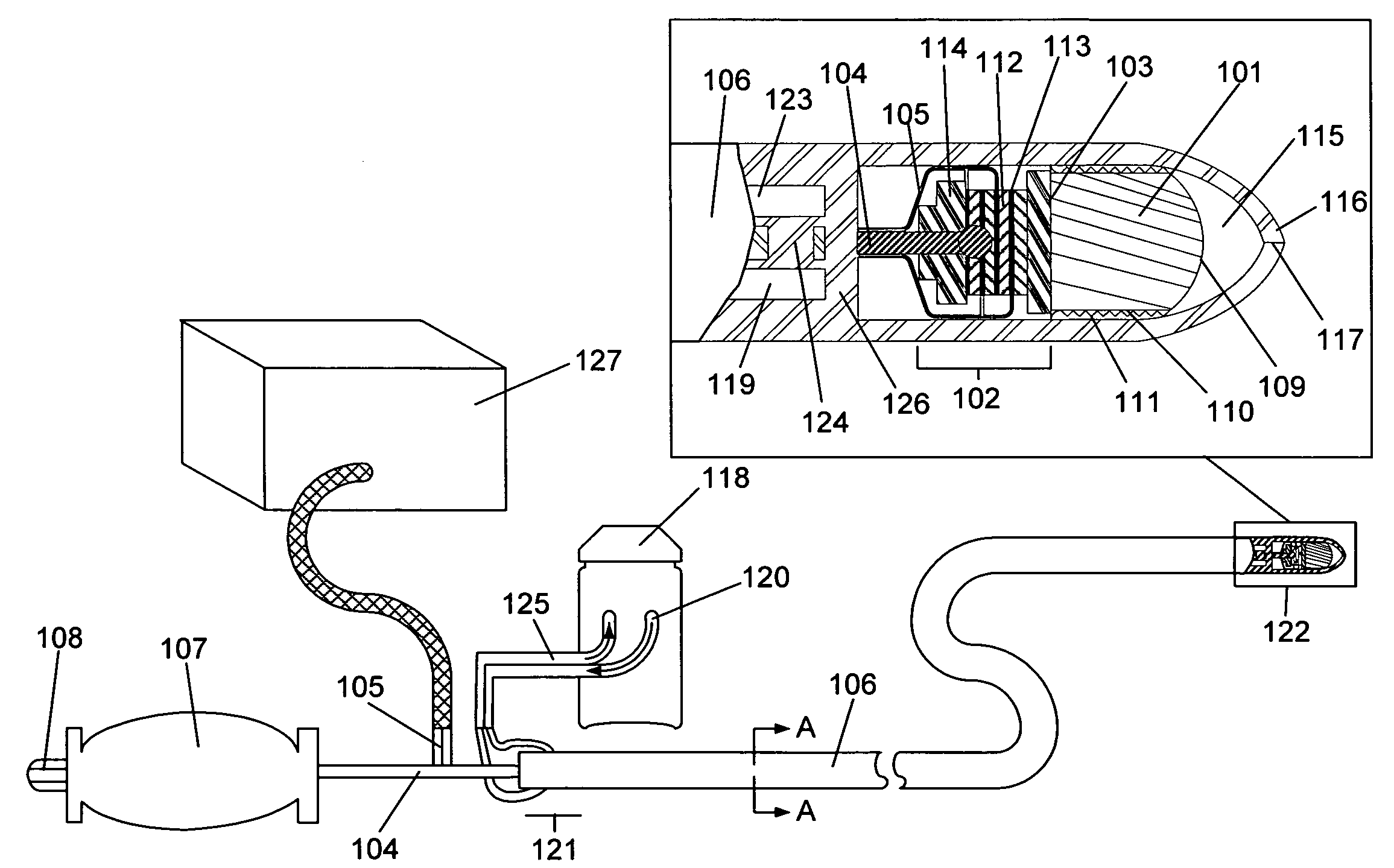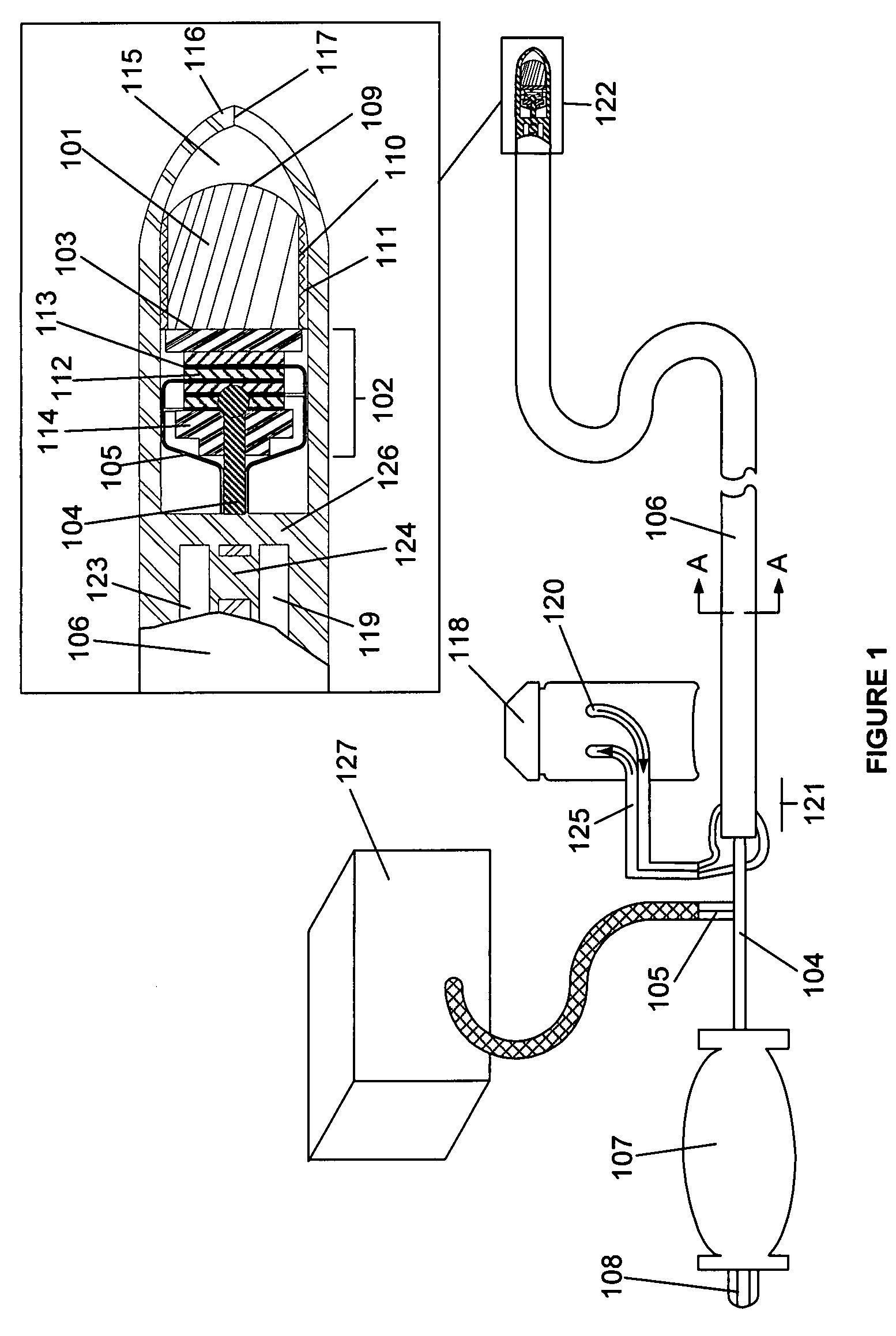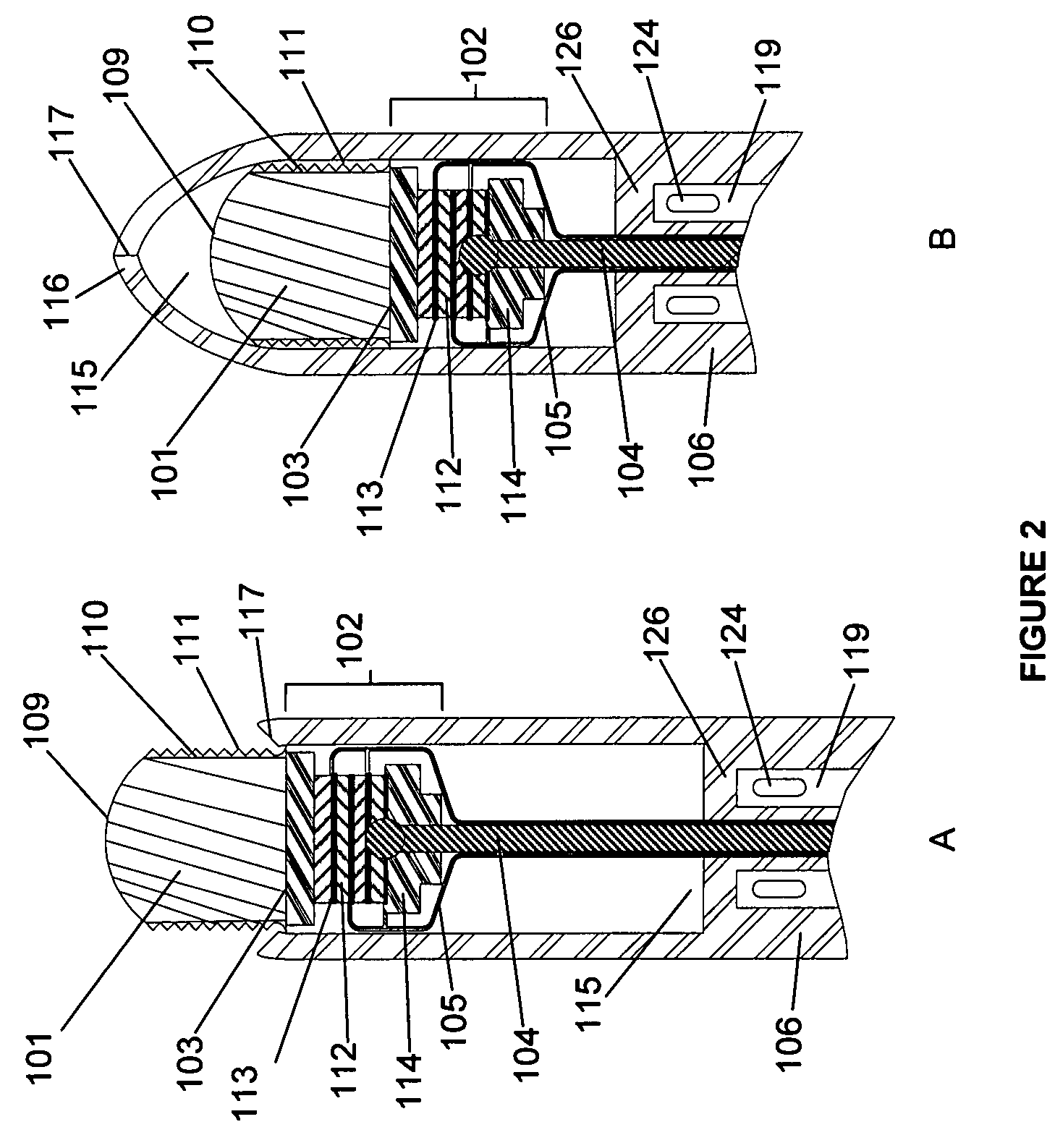Ablative ultrasonic-cryogenic apparatus
a cryogenic apparatus and ultrasonic technology, applied in the field of ablative equipment, can solve the problems of increasing the risk of developing af, inability to induce ideal lesion, and several adverse interactions, and achieve the effect of quick inducing surface abrasion, facilitating the movement of the probe during ablation, and facilitating surgeons to control the lesion induced
- Summary
- Abstract
- Description
- Claims
- Application Information
AI Technical Summary
Benefits of technology
Problems solved by technology
Method used
Image
Examples
Embodiment Construction
[0031]Disclosed is an ablative apparatus that may be used to treat atrial fibrillation and other arrhythmias. Preferred embodiments of the ablative apparatus are illustrated in the figures and described in detail below.
[0032]FIG. 1 depicts a possible embodiment of the ablative apparatus. The ablative apparatus comprises an ablation probe 101, a transducer 102 capable of capable of ultrasonically driving the ablation probe 101 in contact with the proximal surface 103 of ablation probe 101, a guide wire 104 secured at one end to transducer 102, electrical leads 105 running along guide wire 104 and connected to electrodes 113 capable of exposing piezo ceramic disc 112 within transducer 102 to an alternating voltage, a catheter 106 encasing ablation probe 101, transducer 102, and at least a portion of guide wire 104, and a handle 107 secured to the end of guide wire 104 opposite transducer 102. Preferably, catheter 106 is composed of a biologically compatible polymer. Handle 107 may con...
PUM
 Login to View More
Login to View More Abstract
Description
Claims
Application Information
 Login to View More
Login to View More - R&D
- Intellectual Property
- Life Sciences
- Materials
- Tech Scout
- Unparalleled Data Quality
- Higher Quality Content
- 60% Fewer Hallucinations
Browse by: Latest US Patents, China's latest patents, Technical Efficacy Thesaurus, Application Domain, Technology Topic, Popular Technical Reports.
© 2025 PatSnap. All rights reserved.Legal|Privacy policy|Modern Slavery Act Transparency Statement|Sitemap|About US| Contact US: help@patsnap.com



